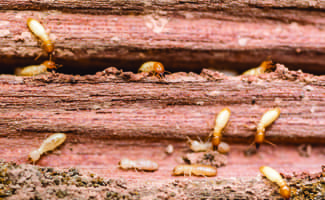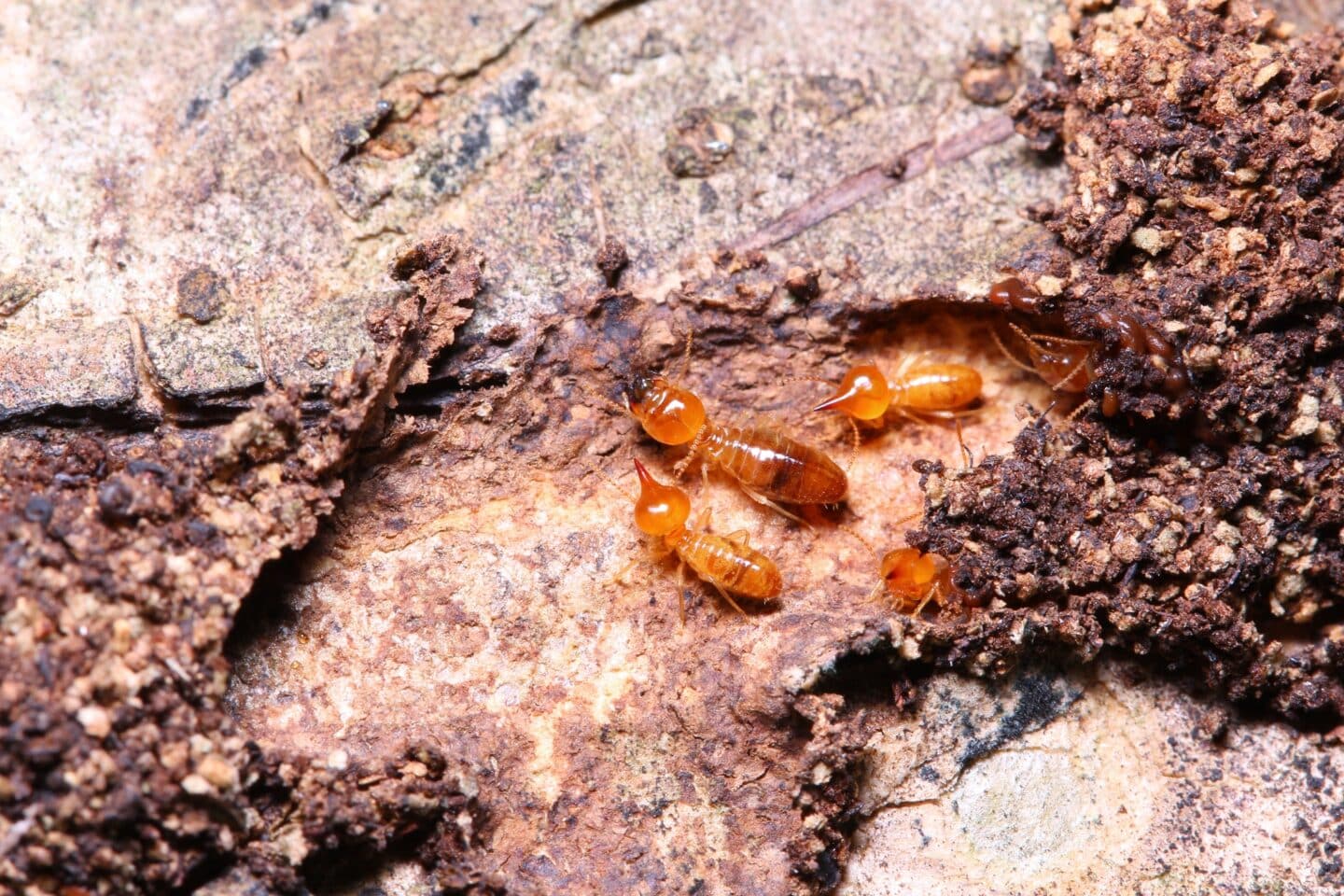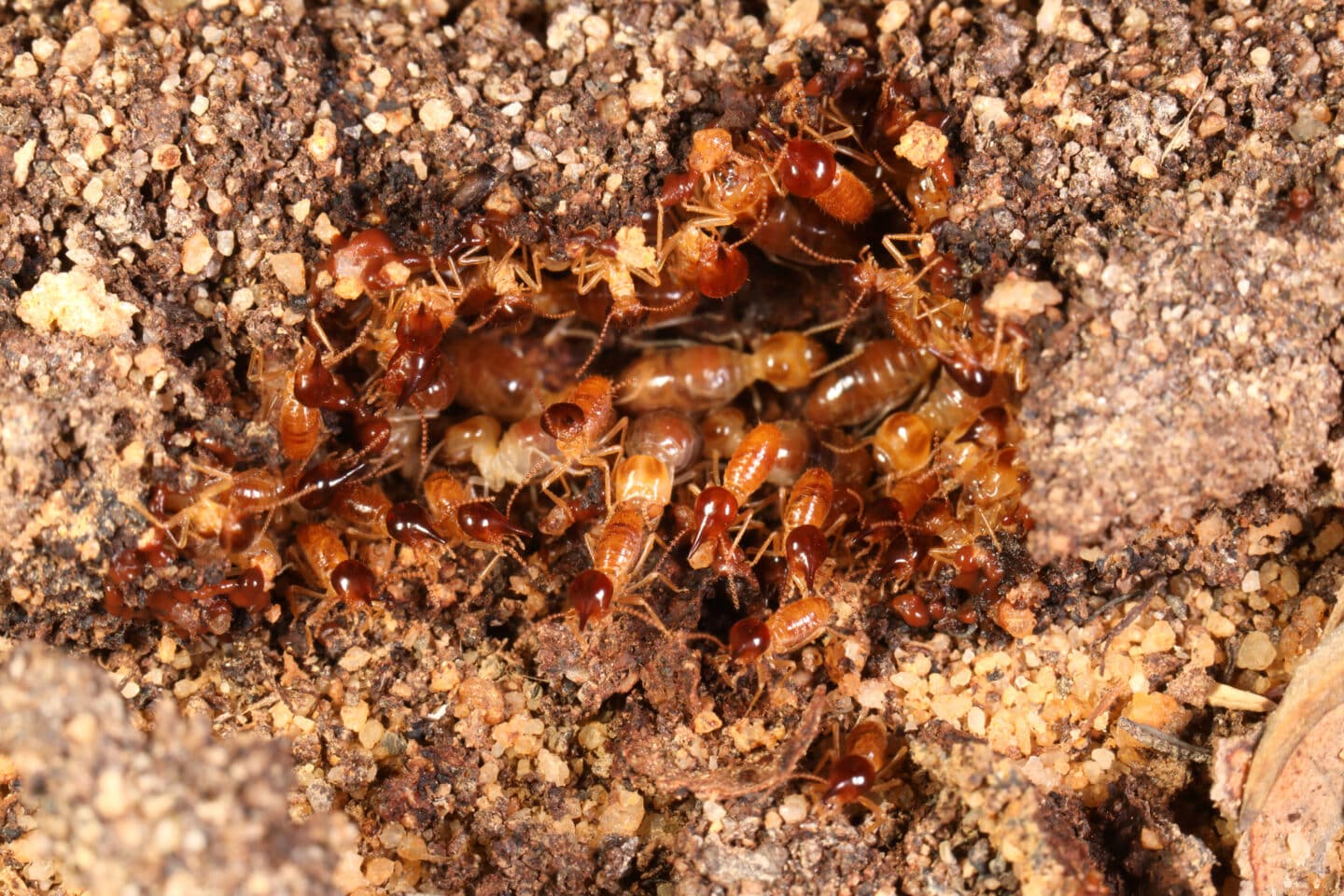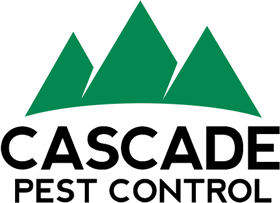Author: Kurt Treftz, Cascade Pest Control
While termites play an important role in the environment by breaking down decaying organic matter, we don’t want them breaking down matter that holds up our roofs! These stealthy, little insects can make inroads in our homes unbeknownst to us. So, you might be wondering, where are termites hiding?

Why are Termites Hiding in Your Home?
Before we can find them, it is important to know why termites find our homes so attractive.
Moisture – Termites need moisture to survive. If you have damp wood, leaks, or other sources of moisture these local termites might come calling.
Warmth / protection – Your structure might provide just the protective and temperate environment that a termite colony needs to thrive. They will be sure to capitalize if they can.
Food – Termites feed on cellulose which is found in wood, plants, paper, cardboard and all sorts of things commonly found in homes.
Where are Termites Hiding in Your Home?
Seattle and the surrounding areas are home to two major types of termites: dampwood and subterranean.
Dampwood termites, like their name implies, need moisture to survive. They aren’t as destructive as other termites because they don’t travel far from their source of moisture.
Subterranean termites are more concerning for home owners because they build their nests under your home and begin a silent invasion through mud tubes and tunnels.
Dampwood termites

Dampwood termites are most likely to be hiding in your home if you have a substantial leak that exposes wood to moisture. Particularly if there is untreated wood in contact with the soil near the foundation of your home, you might find dampwood termites hiding there. More likely dampwood termites are in the rotten stumps or decaying organic material around your property.
Subterranean termites

Of more concern for Seattle homeowners are subterranean termites. This species is more insidious. They bring their moisture with them through mud tunnels and tubes that allow them to reach further into your home for food. These tunnels also keep them from being easily detected as they approach your home from below.
Subterranean termites are quick to exploit weaknesses in your foundation. If they have access to wood like joists and walls, they can find access to your home. You might find them hiding in storage areas with cardboard boxes that they can dine on.
The subterranean termite can infiltrate baseboards and floorboards. It can burrow into kitchen cabinets and wooden furniture. And subterranean termites can even make their way to damage roofs and eaves.
Signs of Hiding Termites
- Swarmers: when winged termites mate they can swarm around your home. This is a good time to be aware of termite presence.
- Frass (or termite droppings) or discarded wings can accumulate in piles where there are active termites.
- Bulging drywall or bubbling paint can alert that termites are at work.
- Swollen or ill fitting doors and windows can signal termites.
- Hollow sounding wood can alert to termite on the premises.
- Sound in the walls can be the clicking or tapping of termites actively working.
- Sagging ceilings or floors are a dangerous sign of termites.
How Do You Stop Termites Hiding in Your Home?
- Diligent inspection – As a homeowner, you should not become complacent. Keep an eye out of places where termites can gain access. In particular, check your foundation and crawl spaces for tell-tale mud tunnels.
- Stop leaks – Resolve leaks as soon as you are aware of them. For many reasons, wet wood is not a good idea, not the least of which is that it attracts termites.
- Cut back vegetation – If you have vegetation that is touching your building, particularly wood siding or exposed wood joists, cut it back. Overgrown bushes can become a superhighway for all sorts of bugs.
- Keep rotting organic material far from your structure – Piles of leaves, firewood, downed trees, and mulch can all be calling cards for cellulose eating termites. Keep your property tidy. Stack woods and piles far away from your structure.
- Lights off during swarming season – When you see evidence of termites in their nuptial flight be sure to keep doors closed and lights of to prevent attracting them into your home.
- Avoid contact between untreated wood and soil – If you see areas of your foundation where untreated wood touches soil, you should work to correct that immediately.
If you want the peace of mind that comes from professional service, give Cascade Pest Control a call. Cascade has more than four decades of experience in termite control in the Seattle area.
